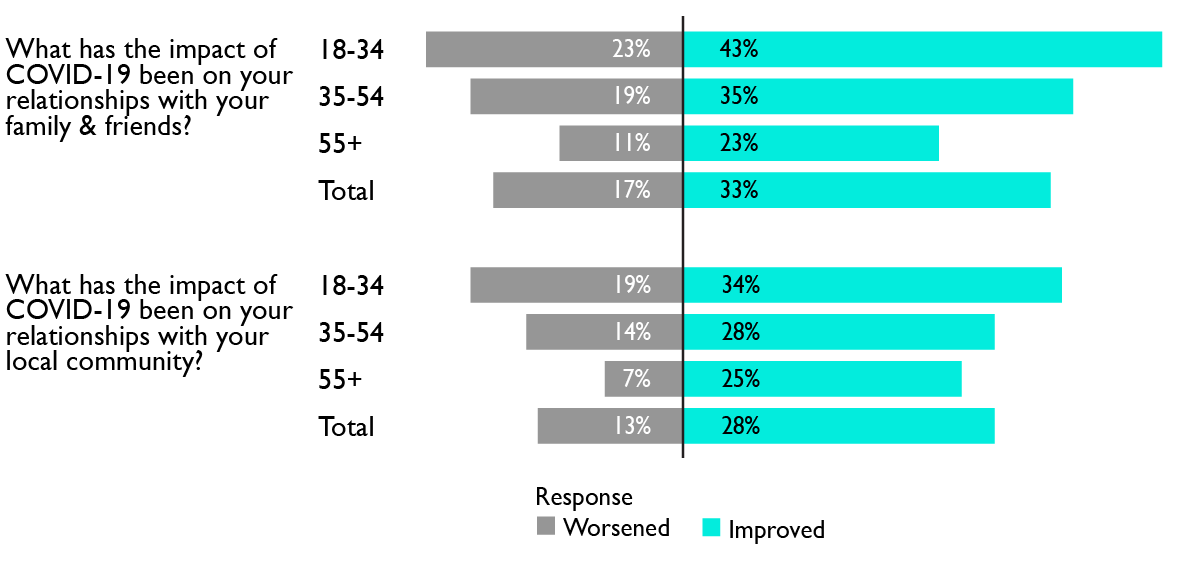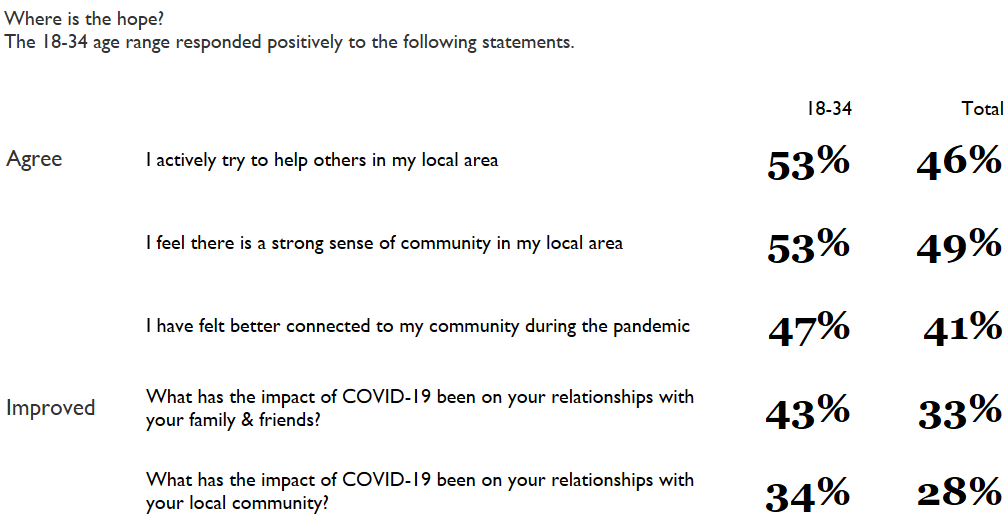Flotilla of different boats
How can we support everyone to build greater resilience into their lives and communities and face the future with increased confidence?
How could we enable every community to design its own future, to imagine what that might look like, and to have a powerful say about the decisions that impact them?

In any crisis and period of turmoil the possibility of innovation and change emerges. Perhaps this is driven by necessity, scarcity or opportunity. Tangible, practical activities that show promise for the future need to be spotted and harnessed. A core task might be to free our individual and collective imaginations from the constrains of the past and the busyness of the present, in order to reimagine the future. Perhaps if we can individually and collectively dream a little we can shine a beacon of hope into our emerging future.
We’ve forgotten how to use our most critical tool - the human imagination. Once we can reactivate our collective imagination there is no end to what we might accomplish.
“Through my work we are inundated with new community businesses staring up, and co-ops. The demand for a new way of doing business is definitely showing through and more than ever I’m seeing that demand.”
Isla McCulloch, chairperson of the community greengrocer Dig In, Edinburgh
“We are definitely looking at the remote working model for us...it's definitely worked for us. If this model continues to work, it's an easy model to replicate, and therefore also expand our services. So that's really important for us. And also the reach that we've had. So, the increase in calls shows us that and our data shows us that we are reaching a wider group of people than we previously did across the UK. And we want to keep that brand awareness, but also both access and reach to our service users as well. That's really important.”
Maaria Mahmood, director, Muslim Youth Helpline
“We’ve set up a limited company, Salvere Support Co, to set up a staffing solution where people have become tired of being the employer. Rules are that the staff will only work for one family; you choose who they are and families work with us to recruit them. You can mix that set up with friends and family – a blended arrangement. Hopefully a great example of how community care can work.”
Stephen Sloss, COE of Salvere Social Enterprise CIC
“So, in the future, with people giving time to creating a healthier, more resilient, a green, a cleaner, stronger, kinder, fairer, community. They want to give time to that because they see it as worthwhile. And they're not really into boring meetings with minutes, but actually it's about fun and action. And so I think having some kind of participatory involvement of people in local decision-making is what I'd like to think the future holds.”
Nick Dixon, senior advisor in person and community centred approaches, Greater Manchester
Zoe Fletcher, Creative Arts East, Norwich resident
Edinburgh
North West
Norfolk
North West
“We need a spirit of overcoming, that despite all the odds that are against us we are still individuals and communities of hope. New entrepreneurs, young people, fostering new ideas, hope and encouragement to make the world a better place.”
“Fresh ideas so we don’t try to recreate the old world or spend too much time lamenting how bad it is. Some of it is terrible. Can we make it a much more hopeful place?”
Birmingham
“Create hope. We need it. We need to do BIG things, not small things. Needs a government to be brave and to do things and make big changes.”
Source: Common Ground and Division in 2020s Britain, More in common, M Juan-Torres et al (2020)
Source: Why coronavirus will stimulate innovation, Kumar Mehta (2020)
Source: Fast and frugal innovations in response to the COVID-19 pandemic, Matthew Harris et al (2020)
Many more people felt improvements in their relationships with family and friends (33 percent) and local community (28 percent) during the pandemic than those for whom these relationships had worsened.

Many more people also agreed they felt better connected to their local community (41 percent) and that they have actively tried to help others in the local area (46 percent). Younger people reported these higher than any other age group.

“There is wisdom in building an accurate mental map of the system you are trying to navigate, but there is also a crucial kind of wisdom in identifying the blank spots on the map, the places where you don’t have clarity”
Farsighted, Steven Johnson (2018)
“In traditional mythology, the hero left the security of the social world behind. Often he had to descend into the depths of the earth, where he would meet an unsuspected aspect of himself. The experience of isolation and deprivation could result in psychological breakdown, which led to vital new insight. If he succeeded, the hero returned to his people with something new and precious.”
A short history of myth, Karen Armstrong (2004)
“And maybe that is the point – to see these times as creating the conditions for new opportunities. The challenges will be many; the fallout painful. But there is an opening for previously unthinkable change, not only to the structures of societies, but also in countless small ways – privately, personally.”
Has a year of living with Covid-19 rewired our brains?, Paula Cocozza, Guardian, (13 December 2020)
“This is an extraordinary time full of vital, transformative movements that could not be foreseen. It’s also a nightmarish time. Full engagement requires the ability to perceive both.”
Hope in the dark, Rebecca Solnit (2004)
“When it comes to more systemic change, though, ad hoc innovation can give the illusion of widespread progress, distracting time and attention from the more difficult and broad-based need for structural innovation.”
A New City O/S: The power of open, collaborative, and distributed governance, Stephen Goldsmith et al (2017)
“Much is being written about the new direction needed when it comes to capitalism. A Green New Deal, ‘Doughnut economics’, distributive welfare, the ‘economics of belonging’, universal basic income, a ‘fiscal constitution’ – there are many far-sighted plans and proposals. All argue that democratic government, not the market, should determine the architecture of a more equitable and sustainable future. Despite their growing influence, these proposals lack political traction. The surprise of the current crisis is that it creates an opportunity to overcome this weakness.”
Covid-19 and the end of economic fatalism, Anthony Barnett (9 October 2020)
“Covid-19 may be having a devastating impact on our industries, social lives and personal grooming standards, but it is also prompting an outpouring of creativity in other arenas. From Spiderman-esque wrist-mounted disinfectant sprays, to a wristband that buzzes whenever you’re about to touch your face, a wealth of new prototypes are demonstrating what human ingenuity is capable of in the face of adversity.”
These new gadgets were designed to fight Covid-19, Peter Beech (2020)
How can we support everyone to build greater resilience into their lives and communities and face the future with increased confidence?
How could we resource a reconstruction effort that takes account of the needs of different people and places?
What does it take to create the enabling conditions for people to come together and design systems that work for them?
How could we encourage new ways of doing things that overcome resistance to change and the anti-risk instinct?
How can we acknowledge the diverse realities of our individual and collective losses?
How could we enable every community to design its own future, to imagine what that might look like, and to have a powerful say about the decisions that impact them?